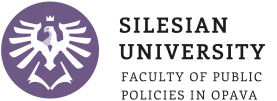Ošetřovatelské perspektivy 2022, 5(1):13-25 | DOI: 10.25142/osp.2022.002
METHODOLOGY OF A GROUP ANTIGENIC SCREENING FOR SARS-COV-2
- 1 Ústav nelékařských zdravotnických studií, Fakulta veřejných politik v Opavě, Slezská univerzita v Opavě
- 2 Oddělení patologické anatomie, Slezská nemocnice v Opavě
Background: This paper is based on one of the algorithms of collective testing, the method of group screening, which we experimentally verify during mandatory screening using POC antigen tests in connection with the spread of COVID-19.
Aim: To verify the model and make recommendations for collective testing for qualitative determination of SARS-CoV-2 antigen detection by POC antigen tests in the context of population-wide screening.
Methods: POC antigen test kits for the qualitative detection of SARS-CoV-2 viral nucleoprotein antigens from direct nasal, nasopharyngeal, or oropharyngeal swabs in a selected population using recommended testing and collective (group) testing methodologies.
Results and discussion: We compared the optimization of the size of the collectively tested group with the sensitivity of the POC test sets. This sensitivity is not sufficient for optimized size (around 10 samples) for an estimated prevalence between 1 % and 2 %, but even the size cut down by the test sensitivity (up to 5 samples) provides not negligible savings.
Conclusions: We propose a test protocol for collective testing of five-member groups, which, assuming a 1 % to 2 % prevalence, provide a material saving factor of 0,25–0.3.
Keywords: Antigen test, sensitivity, specificity, screening, group testing, COVID-19, SARS-CoV-2
Received: November 17, 2021; Revised: December 19, 2021; Accepted: January 6, 2022; Published: June 9, 2022 Show citation
References
- Aktualizované základní informace o onemocnění novým koronavirem - COVID-19 (coronavirus disease 2019). In: SZÚ [online]. 8. 7. 2020 [cit. 15. 11. 2021]. Dostupné z: https://bit.ly/3kIuOFI.
- BERNARD, M., COSENTINO, PIERI, L., ZACHARY, P., BUSER, M., KBAIER, L. a GIANNOLI, J.M. 2021. Retrospective analysis of the performance of the SARS-CoV-2 rapid antigen detection test compared to the reference RT-PCR test. Annales de Biologie Clinique [online]. 79(2), 168-175 [cit. 14. 3. 2022]. ISSN 0003-3898. Dostupné z: doi:10.1684/ abc.2021.1641.
 Go to original source...
Go to original source...  Go to PubMed...
Go to PubMed... - DINNES, J., DEEKS, J. J., BERHANE, S., et al. Rapid, point-of-care antigen and molecular- based tests for diagnosis of SARS-CoV-2 infection. Cochrane Database of Systematic Reviews. 2021, č. 4. ISSN 14651858.
 Go to original source...
Go to original source...  Go to PubMed...
Go to PubMed... - FERNANDEZ-MONTERO, A. et al. Validation of a rapid antigen test as a screening tool for SARS-CoV-2 infection in asymptomatic populations. Sensitivity, specificity and predictive values. EClinicalMedicine. 2021, roč. 37. ISSN 2589-5370.
 Go to original source...
Go to original source...  Go to PubMed...
Go to PubMed... - FERTÉ, T. et al. Accuracy of COVID-19 rapid antigenic tests compared to RT-PCR in a student population: The StudyCov study. Journal of Clinical Virology. 2021, roč. 141. ISSN 1386-6532.
 Go to original source...
Go to original source...  Go to PubMed...
Go to PubMed... - GENEST, C. and ROUSSEAU, C. Skupinový screening (Group Screening). Pokroky matematiky, fyziky a astronomie. 2021, roč. 66, č. 2, s.73-80. ISSN 0032-2423.
- Novel Coronavirus disease 2019 (COVID-19) Situation: Report - 42, 2021. World Health Organization: Coronavirus disease (COVID-19) [online]. May 2020 [cit. 14. 11. 2021]. Dostupné z: https://https://bit.ly/3CcxFww.
- Novel Coronavirus disease 2019 (COVID-19) Situation: Report - 5, 2020. World Health Organization: Coronavirus disease (COVID-19) [online]. 25. 1. 2020 [cit. 14. 11. 2021]. Dostupné z: https://bit.ly/3Dkr6cI.
- Novel Coronavirus (2019-nCoV): Situation Report - 8. World Health Organization: Coronavirus disease (COVID-19) [online]. 25. 1. 2020 [cit. 14. 11. 2021]. Dostupné z: https://bit.ly/3ounAX4.
- Novel Coronavirus (2019-nCoV): Situation Report - 11. World Health Organization: Coronavirus disease (COVID-19) [online]. 31. 1. 2020 [cit. 14. 11. 2021]. Dostupné z: https://bit.ly/3qIJJn4.
- RICE, J. A. Mathematical Statistics and Data Analysis. Cengage Learning. 2006. ISBN 978-8131519547.
- SEYNAEVE, Y. et al. Evaluation of Two Rapid Antigenic Tests for the Detection of SARS- CoV-2 in Nasopharyngeal Swabs. Journal of Clinical Medicine. 2021, roč. 10, č. 13, s. 1-9. ISSN 2077-0383.
 Go to original source...
Go to original source...  Go to PubMed...
Go to PubMed... - TORRES, J. R. Are rapid antigen SARS-Cov-2 tests effective for mass screening of travelers at airports? The Olympic experience. Journal of Travel Medicine. 2021, roč. 28, č. 7. ISSN 1708-8305.
 Go to original source...
Go to original source...  Go to PubMed...
Go to PubMed... - TROJÁNEK, M. et al. Nový koronavirus (SARS-CoV-2) a onemocnění COVID-19. Časopis lékařů českých. 2020, roč. 159, č. 2, s. 55-66. ISSN 0008-7335.
 Go to PubMed...
Go to PubMed... - WEST, C. P., MONTORI, V. M. and SAMPATHKUMAR, P. COVID-19 Testing. Mayo Clinic Proceedings. 2021, roč. 95, č. 6, s. 1127-1129. ISSN 0025-6196.
 Go to original source...
Go to original source...  Go to PubMed...
Go to PubMed... - XU, M. et al. COVID19 diagnostic testing: Technology perspective. Clinical and Translational Medicine. 2020, roč. 10, č. 4, s. 1-15. ISSN 2001-1326.
 Go to original source...
Go to original source...  Go to PubMed...
Go to PubMed... - YOKOTA, I. et al. Mass Screening of Asymptomatic Persons for Severe Acute Respiratory Syndrome Coronavirus 2 Using Saliva. Clinical Infectious Diseases. 2021, roč. 73, č. 3, s. 559-565. ISSN 1058-4838.
 Go to original source...
Go to original source...  Go to PubMed...
Go to PubMed... - ZAHROUNI, W. and KAMOUN, H. Group testing for large-scale COVID-19 screening. Journal of Decision Systems. 2021, s. 1-15. ISSN 1246-0125.
 Go to original source...
Go to original source...
This is an open access article distributed under the terms of the Creative Commons Attribution 4.0 International License (CC BY 4.0), which permits use, distribution, and reproduction in any medium, provided the original publication is properly cited. No use, distribution or reproduction is permitted which does not comply with these terms.



